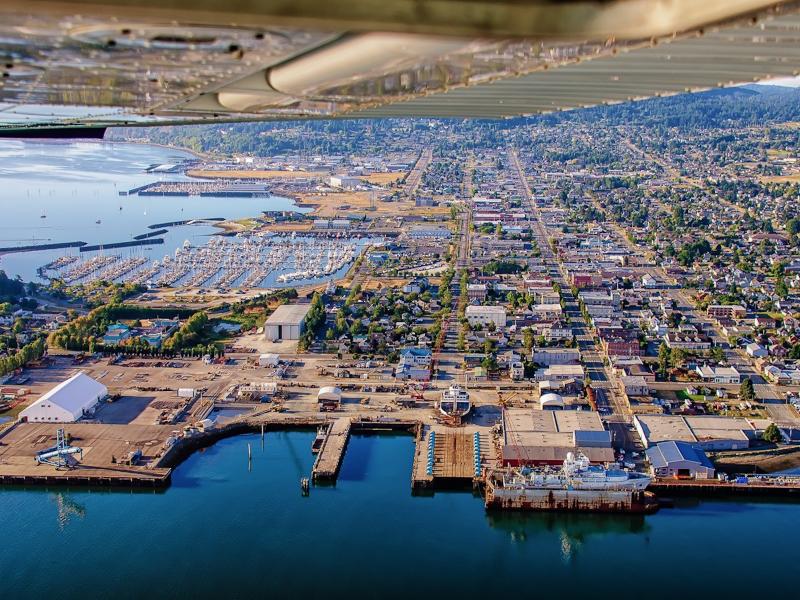
Commercial Buildings
Commercial Buildings
Supporting energy reliability and cost savings for commercial buildings
Supporting energy reliability and cost savings for commercial buildings
PNNL supports efforts to better understand the energy use of commercial buildings and provides expertise and technology solutions that lead to improved efficiency.
Shutterstock
Pacific Northwest National Laboratory (PNNL) advances and helps achieve the Department of Energy’s (DOE’s) vision of high-performing commercial buildings that balance energy efficiency with affordability, reliability, and enhanced performance.
Many types of structures fit the definition of commercial buildings—offices, schools, hospitals, retail stores, warehouses, large multi-family residences, and more. America’s commercial buildings reflect a variety of ages, construction types, and configurations—from single-level structures to skyscrapers. These buildings collectively contain tens of billions of square feet of floor space and consume greater than one-third of the nation’s electricity. Each year, new structures are added to the nation’s commercial building stock.
Experts contend that most commercial buildings use more energy than they need. Consumption can be optimized by new methods and technologies, focusing on both energy addition and innovation to ensure reliability and cost-effectiveness. Such improvements can save money, provide consumer choice, and generate economic benefits.
PNNL supports the modernization of America’s energy infrastructure and diversification of energy sources, including fossil fuels, nuclear, geothermal, and hydropower, in alignment with DOE’s priorities on energy innovation and security. The DOE Building Technologies Office, through its Commercial Buildings Integration program, develops and advances innovative energy-saving measures that deliver impactful, cost-effective results to bolster America’s energy leadership and competitiveness.
PNNL partners with the Building Technologies Office to understand and remove potential barriers for promising new methods, as well as verify and validate the performance of technologies and systems. Specifically, researchers draw on longstanding, buildings-related capabilities and contributions to deliver expertise and tools.

